Table of Contents
What Is Pickleball? Pickleball is a mix of tennis, badminton, and ping pong. It was invented in 1965 and is now gaining popularity worldwide. In Singapore, it’s especially loved by expats for its social and fun nature.
The game is played on a smaller court, making it easy for all ages and fitness levels to enjoy. It’s easy to learn, making it perfect for families and beginners. The fast-paced games and low-impact play also make it great for anyone looking for a fun and active sport.
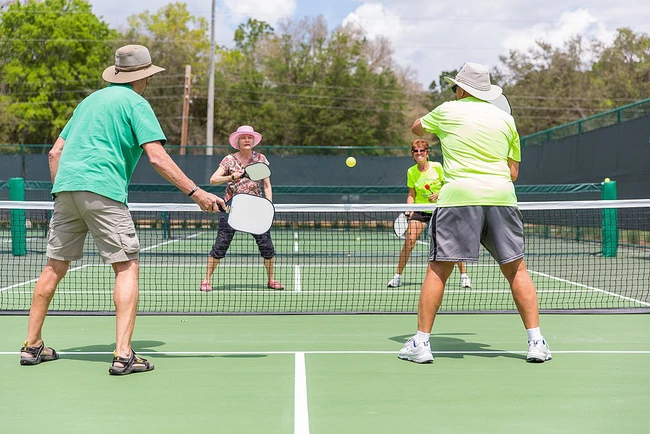
What is Pickleball Game Structure?
Pickleball is typically played in doubles (two players per team), though singles play is also popular. The court and rules remain the same in both formats. Each team serves, rallies, and scores points until one team wins.
The scoring in pickleball is simple, designed to keep matches flowing. Games are played to 11 points, and the winning team must have at least a 2-point lead to win. Here’s how a typical game might play out:
- Points: Points are only scored by the serving team. If the receiving team wins a rally, they don’t score, but they do win the serve.
- Games: A standard game of pickleball is played to 11 points, but competitive matches may go up to 15 or 21 points, depending on the format.
- Matches: A match typically consists of the best two out of three games. The fast-paced nature of pickleball means matches usually last no longer than 20-30 minutes.
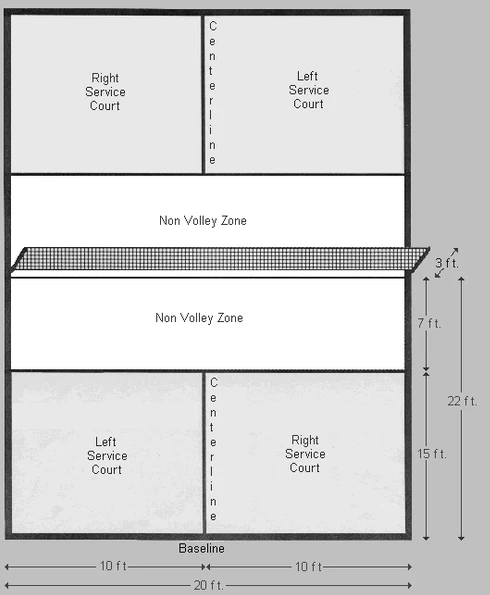
To win a game of pickleball, the first team to reach 11 points wins, but they must have a lead of at least 2 points. For example, if the score is 10-10, play continues until one team pulls ahead by 2 points, such as 12-10.
At The American Club, many members enjoy the competitive yet social aspects of the game. Pickleball is more than just a sport; it’s a fantastic way to meet other expats and make lasting connections while staying fit and active.
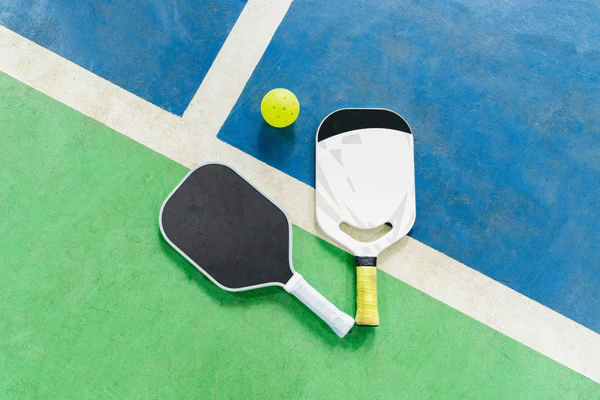
Pickleball Rule
The beauty of pickleball lies in its straightforward rules. Let’s break it down:
Rule #1: The Serve
Serving in pickleball follows specific rules that are simple but crucial to understand.
- The serve must be underhand, with the paddle below your waist at the time of contact.
- The ball must be hit diagonally across the court, landing in the opposite service area.
To perform a legal serve, swing the paddle in an upward motion, making contact below your waist. The ball cannot be bounced before hitting.
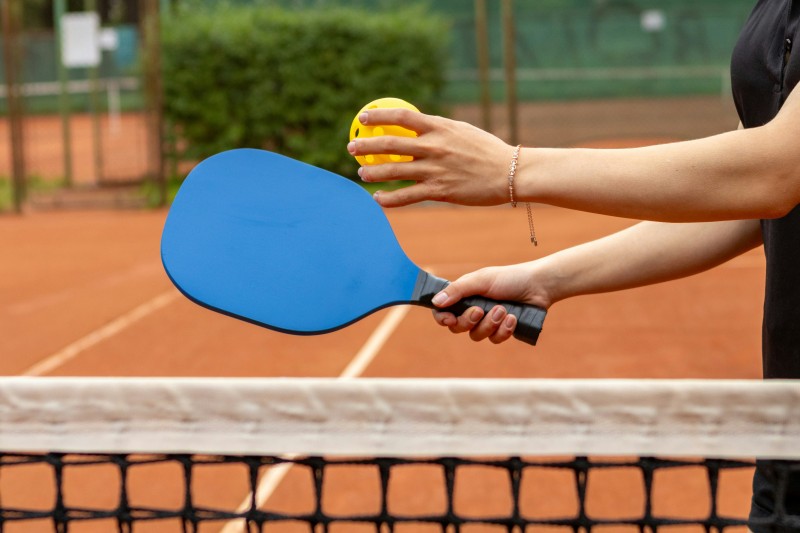
Positioning on the Court for Serving:
- For singles, stand behind the baseline and serve from the right side when your score is even, and the left when it’s odd.
- In doubles, the same rule applies, but your partner stands in the opposite box, ready to receive.
Common Serving Mistakes to Avoid
- Serving overhand
- Serving into the net
- Standing inside the court before making the serve
Rule #2: The Two-Bounce Rule
The two-bounce rule requires the ball to bounce once on each side before any volleying (hitting without a bounce) can occur.
This rule ensures fairness and prevents players from dominating with aggressive shots right from the serve.
It slows the pace of the game, allowing for more strategic play rather than fast, overpowering shots, which levels the playing field for beginners.
It promotes longer rallies, improving ball control and giving all players, especially beginners, more time to react and adjust their shots.
Rule #3: Faults in Pickleball
A fault in pickleball is any action that results in the loss of a point or serve.
Common Faults to Avoid:
- Hitting out of bounds: If the ball lands outside the designated court lines, it’s a fault.
- Double-bounce: If the ball bounces twice on one side before being hit, the play results in a fault.
- Kitchen violation: Players cannot hit a volley while standing in the non-volley zone, commonly referred to as the “kitchen.”
Being aware of these common faults helps keep the game smooth and competitive.
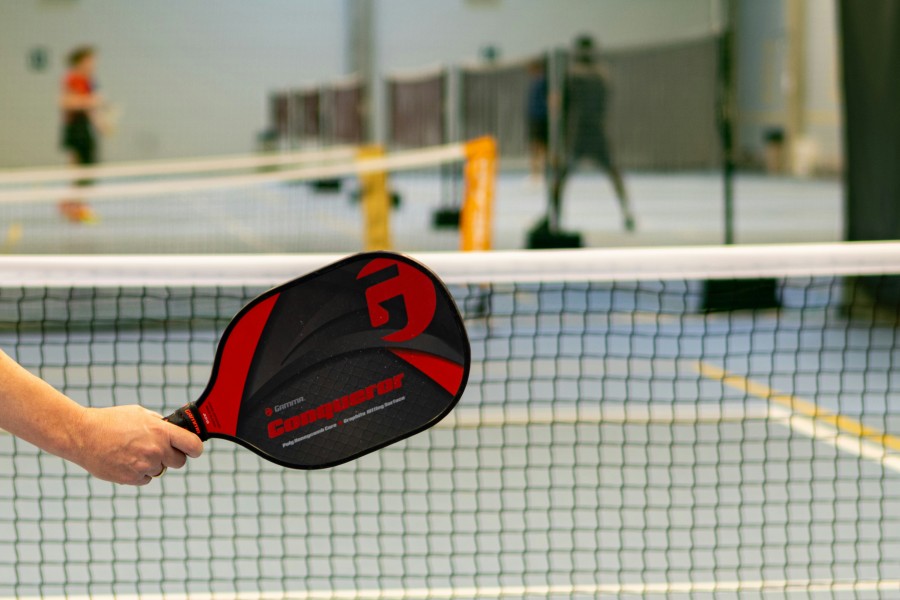
Rule #4: The Kitchen (Non-Volley Zone)
The “Kitchen,” also known as the non-volley zone, is a 7-foot area on both sides of the net where players cannot volley (hit the ball before it bounces).
The kitchen is located between the net and the kitchen line. Players are not allowed to hit the ball in the air (volley) while standing in or touching the kitchen. This rule is designed to keep the game fair and reduce fast-paced, overpowering plays near the net.
For beginners, positioning just behind the kitchen line allows you to react quickly to your opponent’s shots while avoiding a kitchen violation. A good tip is to avoid stepping into the kitchen unless the ball bounces there, as this will reduce faults.
Rule #5: Scoring in Pickleball
In pickleball, only the serving team can score points. Games are typically played to 11 points, and a team must win by at least 2 points.
To win a game, the first team to reach 11 points must also lead by 2 points. If the score reaches 10-10, the game continues until one team achieves a 2-point lead (e.g., 12-10).
When serving, the score is called as three numbers: (1) the serving team’s score, (2) the receiving team’s score, and (3) the server number. For example, if your team is ahead 5-3 and you’re the second server, you would call “5-3-2.”
In both singles and doubles, points accumulate only when the serving team wins a rally. Once a team reaches 11 points with a 2-point margin, they win the game.
Rule #6: Pickleball Doubles Play
Doubles play introduces a few key differences from singles. In doubles, each player on the serving team gets a chance to serve before the serve switches to the opposing team. This means more opportunities for scoring and longer games.
Adjustments in Serving, Scoring, and Court Positioning:
In doubles, teammates alternate serving after a fault, and they share the court, requiring coordination and communication.
Players generally position themselves close to the kitchen line after serving or returning a serve, staying alert for volleys while defending their half of the court. This teamwork adds a new layer of strategy compared to singles play.
Finding a Pickleball Court Near You
As pickleball continues to grow in popularity, finding a court in Singapore has become easier than ever. Whether you’re a beginner or a seasoned player, there are several great spots to play across the island. Here are some popular locations:
The American Club (TAC)
As a member of The American Club, you’ll have access to pickleball courts in a welcoming, social environment.
It’s the perfect place to play with fellow expats and families, enjoy the club’s amenities, and participate in regular pickleball events.
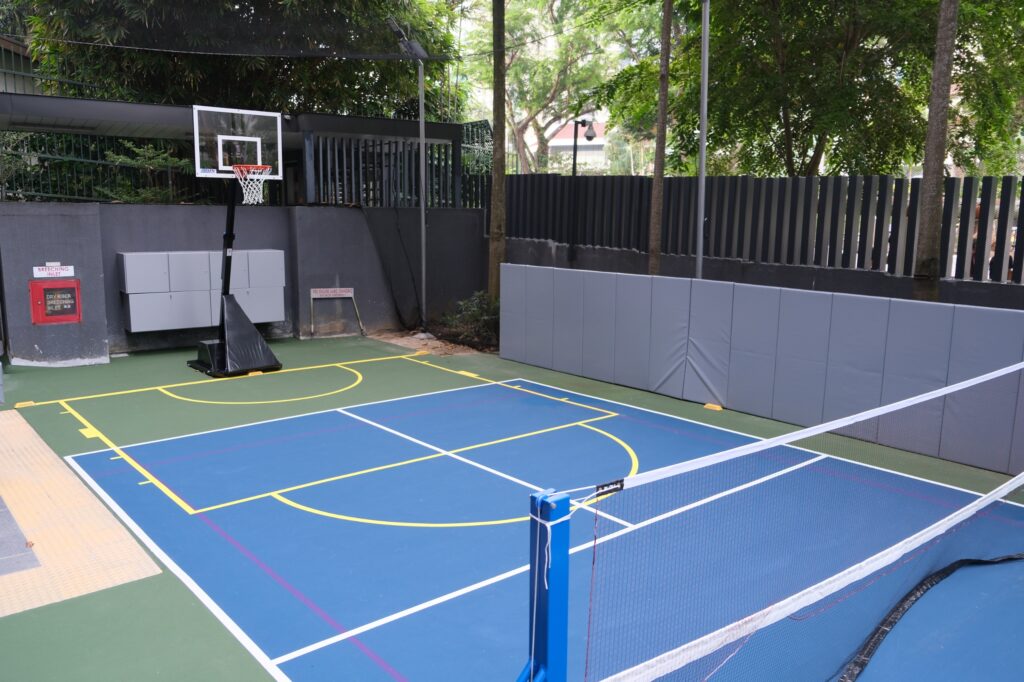
ActiveSG Courts
ActiveSG operates pickleball courts at various locations throughout Singapore. Courts are well-maintained and affordable, requiring advance booking via the ActiveSG app or website.
Types of Shots in Pickleball
The Forehand Shot
This is the most fundamental shot in pickleball. For proper grip, hold the paddle as if shaking hands with it.
Stand with your feet shoulder-width apart, and swing the paddle in an upward motion, using your dominant hand for control. Focus on keeping your wrist firm while aiming for consistency and power.
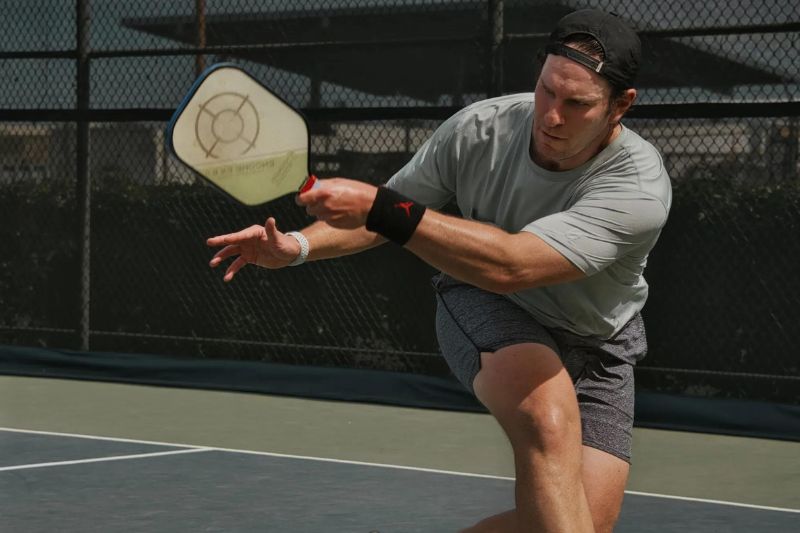
The Backhand Shot
The backhand shot can be challenging for beginners but essential for balanced gameplay. Rotate your body sideways, with the paddle starting on the opposite side of your dominant hand.
Keep a firm grip and swing across your body, ensuring smooth control. This shot is great for returning balls that land on your non-dominant side.
The Volley
A volley in pickleball is when you hit the ball in mid-air before it bounces on your side of the court. Timing and control are crucial here, as volleys often occur during fast-paced exchanges.
Position yourself just behind the kitchen line, keep your paddle up, and focus on quick reactions to maintain pressure on your opponent.
The Dink Shot
A dink is a soft, controlled shot that lands in the opponent’s kitchen. It’s one of the most strategic shots in pickleball, used to force your opponent to move forward and play a low ball, which reduces their ability to attack.
For beginners, mastering the dink is all about soft, gentle hits with minimal backswing while maintaining control at the net.
Mastering these basic shots will significantly improve your pickleball skills and keep your game more versatile and engaging!
Equipment Needed to Play Pickleball
Pickleball Paddles
Pickleball paddles vary in material – wood, composite, and graphite – each offering different levels of power and control.
Wooden paddles are affordable but heavier, while graphite paddles provide better precision and control for more serious players. Beginners may prefer composite paddles for a balance of both.
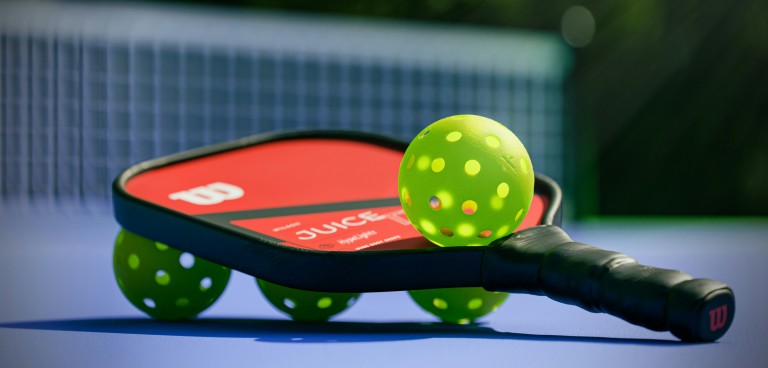
The Pickleball Ball
Pickleball balls are made of perforated plastic, with different versions for indoor and outdoor play. Indoor balls have larger holes and are lighter, while outdoor balls are heavier with smaller holes to resist wind. Be sure to choose the right type based on your playing environment.
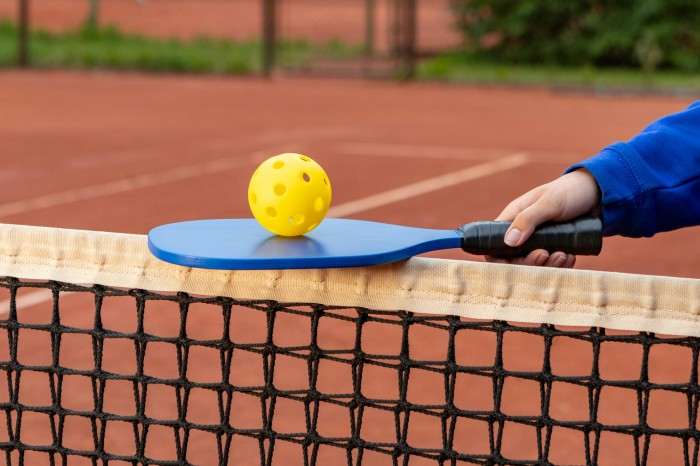
Pickleball Net and Court Layout
A standard pickleball court measures 20 x 44 feet, similar to a badminton court. The court is divided into different zones:
- Service areas: Divided by a centerline, where serves must land diagonally across.
- The Kitchen (Non-Volley Zone): A 7-foot area in front of the net where players cannot volley.
The net height is 36 inches at the sides and 34 inches in the middle. For proper setup, ensure the net is taut and correctly positioned, with center support if needed.

What to Wear When Playing Pickleball
Footwear
Choose court shoes with good grip and ankle support to prevent slipping, especially on outdoor or hard surfaces.
Clothing
Lightweight, moisture-wicking athletic gear is recommended. Opt for breathable fabrics that keep you cool, like dri-fit shirts and shorts. A hat and sunglasses are also useful for outdoor games in sunny conditions.
Tips for Pickleball Beginners
How to Improve Quickly:
Focus on mastering key skills like serving, ball placement, and soft shots like the dink. Practice controlling the pace of the game, especially at the net, to outsmart opponents.
Common Beginner Mistakes:
Avoid kitchen violations by not stepping into the non-volley zone when volleying. Overhitting is another common issue – try to control your power, especially in long rallies. Be mindful of positioning, and avoid getting stuck too close to the net or too far back.
Pickleball Etiquette:
Respect the game by calling lines fairly, keeping track of scores, and showing good sportsmanship. Always acknowledge your opponent’s efforts, keep a positive attitude, and maintain friendly competition on the court.
Conclusion
Pickleball is an easy-to-learn, engaging sport that requires minimal equipment – just a paddle, ball, and net – and follows simple rules, making it accessible for all ages and skill levels.
Mastering basic strategies like dinking and controlling your volleys will greatly improve your gameplay.
If you’re in Singapore, now is the perfect time to get out and enjoy a game. The American Club (TAC) offers pickleball courts for members, making it an ideal spot for both casual and competitive play.
Explore the benefits of a TAC membership today and book your court!



